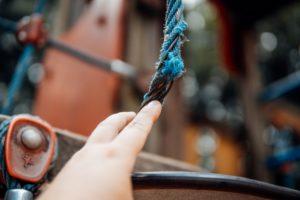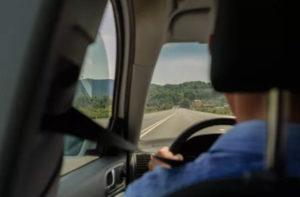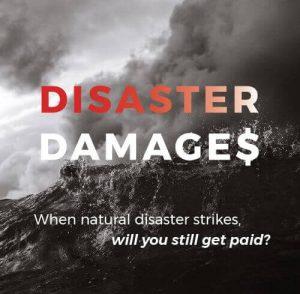
There’s no better way to let your children release their pent-up energy than a visit to the playground. Unfortunately, some parks are filled with hazards. While this may be more likely with older and poorly maintained parks, there could be risks at the newest and nicest playgrounds, too.
Knowing what causes playground injuries and how to decrease the risks your child faces while playing are crucial for keeping your child safe. Keep reading to learn more about playground hazards and what you can do if your child gets hurt.
Playground Injuries Are Common
More than 200,000 children visit emergency rooms every year with playground injuries, according to the Consumer Product Safety Commission (CPSC). Most injures are minor, but some injuries can be serious. Common playground injuries include:
- Fractured or broken bones
- Bruises
- Traumatic brain injuries
- Internal injuries
If your child was injured on a playground, then you may be entitled to compensation for medical bills and other damages. A Baton Rouge accident attorney from the Morris Bart law firm will evaluate your case to determine if you have grounds for a claim.
Taking legal action could help you recover compensation, and may save other children from the same injuries.
For a free legal consultation, call 800-537-8185
What Causes Playground Injuries?
Let’s take a look at six common causes of playground injuries:
Unsafe Surfaces
According to the CPSC, playground surfaces should be soft to help children avoid bone fractures and breaks, head trauma, and bruises. Your child’s playground should have at least 12 inches of mulch, sand, gravel, wood chips, or pea gravel. Some playgrounds may use rubber mulch or other materials.
Some modern playgrounds have soft mats instead of these surfaces. Make sure these are made from rubber or a similar material. This protective surface should extend at least 6 feet around the equipment. Unlike playgrounds of the past, no modern playground should have children playing on concrete, asphalt, or even dirt.
If your child’s playground or a neighborhood park has washed out mulch, thin mats, or other issues, notify the maintenance crew or property owner and do not allow your child to play in that area until it is repaired.
Structure Spacing
In some cases, property owners may not heed the guidelines to put playground equipment in a larger space. This can put playground users at risk of injury.
Structures that are more than 30 inches tall should be at least 9 feet apart. Without proper spacing, children could jump or fall from one structure and hit another. It also may be difficult to use some equipment safely if they are too close. Swings, for example, need ample room to move back and forth.
Dangerous Hardware
Check equipment for dangerous hardware such as S hooks, protruding bolt ends, or exposed nails. If you find any of these issues, do not allow your children to play in that area and contact the party responsible for maintaining the playground.
Small Spaces
Look for small spaces that might trap children. Openings in guardrails or between ladder rungs should be wider than 9 inches or narrower than 3.5 inches to prevent your child from getting stuck. Toddlers and preschoolers are at the most risk, but older children playing on equipment meant for younger children could also get trapped.
If this does occur, dial 911, and a rescue squad, paramedics, or other first responders will have a few tricks they can use—or power tools if needed—to free your child, usually with no additional injuries.
Sharp Edges
Investigate all the equipment for sharp edges. Check slides, handrails, and ramps for protruding or worn edges that might cut your child. This is a potential hazard on worn metal equipment or older wooden structures where broken sections can leave splintered wood exposed. Report any issues to those who oversee the playground.
If your child has a difficult-to-remove splinter or is cut by metal, you may need to take them to a doctor who can ensure the wound is thoroughly cleaned. The doctor may also recommend a tetanus booster.
Tripping Hazards
Check the playground for tripping hazards. Common examples include uneven pavement, tree stumps, and rocks. Since the playground should have mulch or mats to soften falls, most injuries from tripping are minor. However, they still occur.
How Common Are Playground Injuries?
According to the Centers for Disease Control and Prevention, nearly three-fourths of all nonfatal playground injuries happen on public playgrounds, and about half of those injuries are severe. Between 1990 and 2000, more than 140 kids aged 14 and younger died in playground accidents.
Click to contact our personal injury lawyers today
Can I Hold the Property Owner Responsible for My Child’s Injuries?
When children get hurt at their neighborhood park, parents often wonder: “Do I have grounds for a personal injury claim if my child sustains an injury on a playground?”
If your child was injured on a playground, then you may be able to recover compensation by making a personal injury claim. Depending on the circumstances, the liable person might be the property owner, the playground designer, a playground equipment manufacturer, the organization that is responsible for playground maintenance, or another party.
You will likely want to work with an attorney on your case. Because playgrounds are often built and maintained by public entities—schools, municipalities, and government-run park services—there are special rules that apply to how these claims work. You may only have a few weeks to get started.
Speak With Our Attorney for Free
A Baton Rouge accident lawyer from the Morris Bart law office will help you fight for the maximum settlement based on your child’s playground injuries. Call us today to schedule a free initial consultation.
Questions?Call 800-537-8185
to find a Morris Bart office near you.





